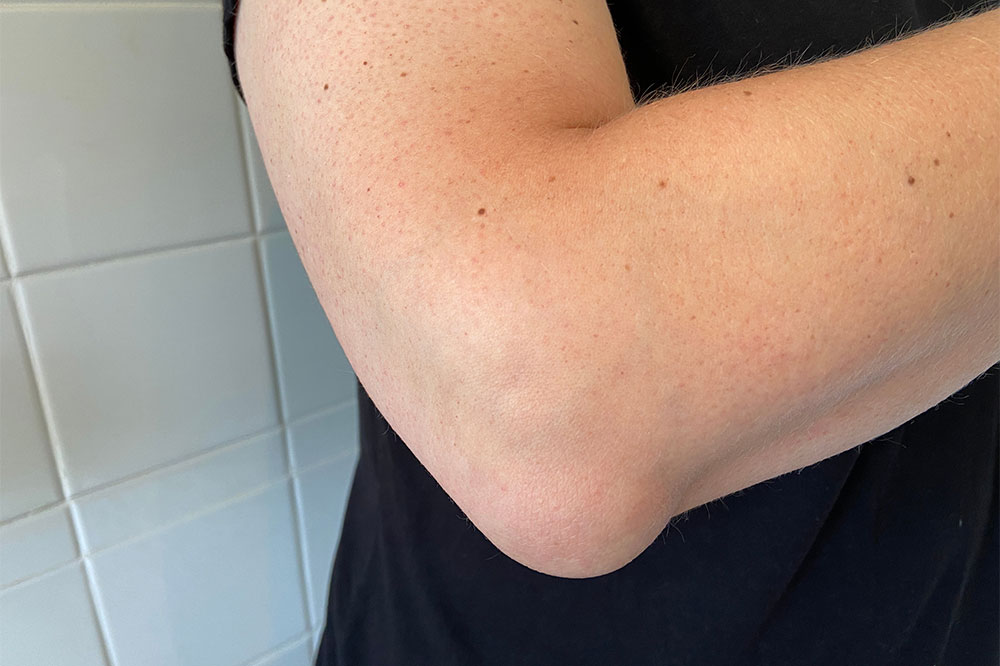
Things to know about acute and chronic bursitis
The bursae pad the gaps between bones, muscles, tendons, and skin. The bursae, a singular bursa, act as a kind of bubble cover for the body’s structures. Bursitis develops when a bursa swells and becomes inflamed. According to healthcare experts, overuse and excessive pressure on a bursa are the most frequent causes of acute and chronic bursitis. An inflamed bursa can cause pain that either appears suddenly or gradually worsens over time.
Types of bursitis
The human body has more than 150 bursae. Any of them may be impacted by bursitis. The condition is more prone to occur in joints used for repetitive motions or in areas of high pressure, such as your:
- Shoulders: Subacromial bursitis
- Elbows: Olecranon bursitis, often known as barflies or miner’s elbow
- Knees: Housemaid’s knee or prepatellar bursitis
- Feet: Near the heel, big toe, or the ball of your foot
- Hips: Iliopectineal or trochanteric bursitis
- Ischial bursitis – often known as weaver’s bottom
The swelling in and around a bursa is the same problem across all varieties of bursitis, despite the names given to them by healthcare professionals.
Signs associated with acute and chronic bursitis
Bursitis’s typical signs and symptoms include:
- Pain, especially while moving the physical portion that is being impacted
- An insufficient range of motion (how far you can move a body part)
- Swelling
- Redness or discoloration of the skin
- A sensation of heat or warmth
- Fever.
- Chills
Acute bursitis signs
There are frequent signs of bursa inflammation in acute bursitis.
- Pain is a characteristic symptom that frequently localizes over the afflicted bursa
- Active motion (when a person moves or bends a joint) can also hurt if it stretches the injured bursa
- A superficial bursa’s acute bursitis frequently includes redness, warmth, and swelling
Chronic bursitis symptoms
Swelling may occur in people with chronic bursitis, but often only if a superficial bursa is involved.
- Any area with chronic bursitis will have discomfort; however, the pain level will vary.
- Due to the pain from bursitis restricting motion of the adjoining joint and associated muscles, many patients may also have a restricted range of motion.
Acute and chronic bursitis causes
Bursitis is frequently brought on by repetitive activities, such as throwing a baseball or lifting heavy boxes at work. It can also be brought on by spending a lot of time in positions that strain a certain area of your body (like kneeling). Here are a few lifestyles that are the causes of bursitis:
- Carpentry
- Raking and gardening
- Painting
- A misaligned joint or bone or poor posture (reasons such as different leg lengths, bone spurs, or arthritis in a joint)
- Scrubbing
- Shoveling
- Engaging in sports like baseball, tennis, and golf
Diagnosis of acute and chronic bursitis
A healthcare professional will inquire about the symptoms and look over the affected region of your body. To determine whether you have bursitis, your doctor may order a few diagnostic procedures, such as:
- X-rays to eliminate any additional conditions
- Use ultrasound or MRI (magnetic resonance imaging)
- An examination of the blood
- A bursa aspiration (taking a fluid sample)
Treatment associated with acute and chronic bursitis
Bursitis typically gets better on its own with relaxation and home remedies. Avoid the activities or postures that make the bursa uncomfortable. Giving that area of your body a rest from activities that strain it will give it time to heal and stop further injury. However, your doctor might suggest different therapies, such as:
- Antibiotics
- Physical therapy
- Occupational therapy
- Intravenous options to reduce discomfort and inflammation
If other therapies are ineffective and you continue to experience symptoms for six months or more, you may need surgery to resect (remove) the bursa.
Prevention of acute and chronic bursitis
Avoiding straining the body is the best method to prevent developing bursitis.
- Learn the appropriate stance or motion for tasks at work or in sports.
- To prevent injury, ease into new exercises or pursuits.
- Don’t spend too much time knelt or seated. The joints will be under a lot of pressure in these poses.
- When kneeling or leaning on your knees, use cushions and pads.
- If you’re performing a repetitive job, take breaks.
Acute and chronic bursitis is painful and can be disturbing in focusing on your job or hobby you love. The good news is bursitis is preventable. This includes figuring out which movements are hurtful. Have patience and don’t rush in your recovery period — rest for the prescribed amount of time and follow your doctor’s suggestion.




